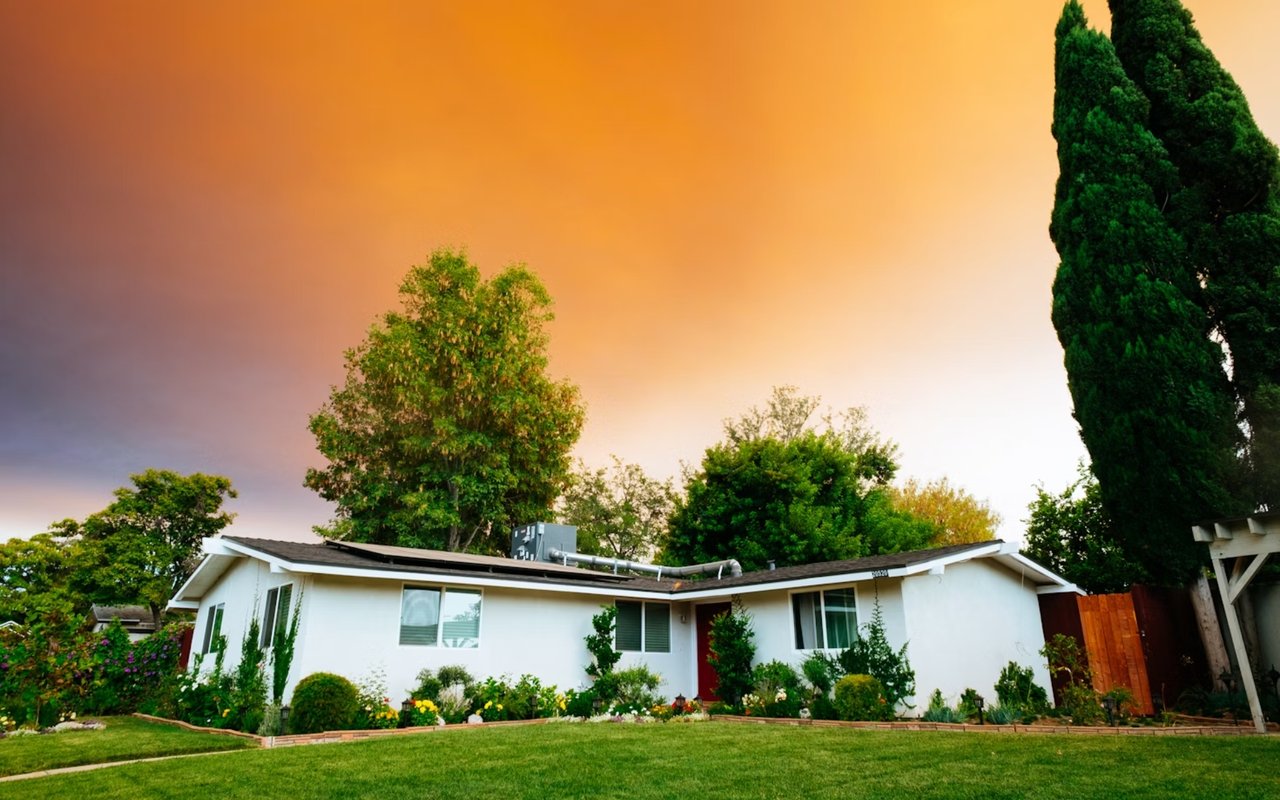Buying a home is a significant investment, and protecting it should be at the top of your priority list. That’s where homeowners insurance comes in. It’s more than just a checkbox on your mortgage checklist; it’s a financial safety net that can protect you during expensive, unexpected circumstances. Whether it’s storm damage or a house fire, homeowners insurance can help you recover without draining your savings.
If you’re buying a home for the first time, you might be wondering what a standard policy actually includes. Homeowners insurance can feel confusing, especially with all the industry jargon and policy variations. That’s why understanding the basics is key. This guide breaks down the different types of coverage you’ll typically find in a homeowners insurance policy, what’s usually excluded, and how you can tailor a plan that works best for your property and needs.
Dwelling Coverage: Protecting the Structure of Your Home
At the heart of your homeowners insurance is dwelling coverage. This part of your policy is designed to help you rebuild or repair your home if it’s damaged by a covered event, such as fire, wind, hail, lightning, or vandalism. Dwelling coverage applies to the structure of your house, including the roof, walls, windows, foundation, and built-in appliances. Essentially, it safeguards the physical components that make up the bones of your home.
This coverage typically insures your property up to a specific dollar amount, which is usually based on the cost to rebuild it, rather than its current market value. If you’ve made renovations or additions, it’s important to adjust your policy to reflect those updates. Failing to keep your coverage aligned with your home’s true replacement cost could leave you underinsured when you need protection most.
This coverage typically insures your property up to a specific dollar amount, which is usually based on the cost to rebuild it, rather than its current market value. If you’ve made renovations or additions, it’s important to adjust your policy to reflect those updates. Failing to keep your coverage aligned with your home’s true replacement cost could leave you underinsured when you need protection most.
Other Structures: Coverage for Detached Spaces
In addition to your main home, most policies also cover what’s known as “other structures.” These are detached buildings or features on your property that aren’t physically connected to the primary dwelling. Think garages, garden sheds, fences, guesthouses, or even a gazebo. If one of these structures is damaged by a covered event, your policy may pay to repair or replace it.
Other structures coverage is usually a percentage of your dwelling coverage — often around 10%. If your property has high-value features or detached buildings used for more than storage, such as a studio or office, it’s worth checking if your current policy provides enough coverage. You may need to increase this limit or purchase an add-on to make sure that everything is protected.
Other structures coverage is usually a percentage of your dwelling coverage — often around 10%. If your property has high-value features or detached buildings used for more than storage, such as a studio or office, it’s worth checking if your current policy provides enough coverage. You may need to increase this limit or purchase an add-on to make sure that everything is protected.
Personal Property Coverage
Homeowners insurance doesn’t just protect the structure; it also protects what’s inside it. Personal property coverage reimburses you for belongings that are damaged, destroyed, or stolen, whether they’re inside your home or even temporarily outside of it. This includes furniture, electronics, clothing, appliances, and valuables. If your luggage is stolen while you’re on vacation or your laptop is taken from your car, your homeowners policy might step in to help.
That said, coverage limits apply, especially when it comes to high-end items. Jewelry, collectibles, artwork, and musical instruments often have sub-limits within a standard policy. If you own valuable items that go beyond those limits, you can add extra protection by scheduling them individually — a process called adding a rider or endorsement. This gives you broader coverage and can include protection against accidental loss, which isn’t usually part of basic personal property coverage.
That said, coverage limits apply, especially when it comes to high-end items. Jewelry, collectibles, artwork, and musical instruments often have sub-limits within a standard policy. If you own valuable items that go beyond those limits, you can add extra protection by scheduling them individually — a process called adding a rider or endorsement. This gives you broader coverage and can include protection against accidental loss, which isn’t usually part of basic personal property coverage.
Loss of Use
If your home is seriously damaged and you can’t live there while it’s being repaired, loss of use coverage becomes essential. Also known as additional living expenses (ALE), this part of your policy can reimburse you for the cost of temporary housing, meals, laundry, and other necessary expenses while your home is uninhabitable due to a covered event.
For example, if a kitchen fire leaves your home without electricity or plumbing for several weeks, your policy could help pay for a short-term rental or hotel, meals out, and any other costs you wouldn’t normally incur. It helps reduce financial stress during an already overwhelming time and allows you to maintain your standard of living until you can return home. Every policy has limits, so it’s important to understand how long and how much it will pay if you ever need this coverage.
For example, if a kitchen fire leaves your home without electricity or plumbing for several weeks, your policy could help pay for a short-term rental or hotel, meals out, and any other costs you wouldn’t normally incur. It helps reduce financial stress during an already overwhelming time and allows you to maintain your standard of living until you can return home. Every policy has limits, so it’s important to understand how long and how much it will pay if you ever need this coverage.
Liability Protection: Coverage for Legal and Medical Costs
Homeowners insurance also offers personal liability coverage, which helps protect you financially if someone is injured on your property or if you accidentally cause damage to someone else’s property. This might include medical bills, legal fees, and any court-awarded damages.
Most standard policies include at least $100,000 in liability coverage, but many homeowners opt for higher limits, as in today’s legal landscape, expenses can add up fast. If you want even more protection, you can consider adding an umbrella policy, which provides additional liability coverage above and beyond the limits of your homeowners insurance.
Most standard policies include at least $100,000 in liability coverage, but many homeowners opt for higher limits, as in today’s legal landscape, expenses can add up fast. If you want even more protection, you can consider adding an umbrella policy, which provides additional liability coverage above and beyond the limits of your homeowners insurance.
What’s Typically Not Covered in a Standard Policy
While homeowners insurance offers broad protection, it doesn’t cover everything. Most policies exclude damage from floods, earthquakes, sewer backups, mold, pest infestations, and general wear and tear. These add-ons are often issued by specialized providers or supported through federal programs like the National Flood Insurance Program (NFIP).
It’s also important to understand that neglect, poor maintenance, or gradual deterioration are not covered. Insurance is designed to protect against sudden and unexpected damage — not long-term problems caused by deferred upkeep. This is why maintaining your property is crucial. Your insurance policy won’t pay for a roof that leaks due to old age or siding that crumbles because of neglect. It’s all about being proactive and understanding the boundaries of your policy.
It’s also important to understand that neglect, poor maintenance, or gradual deterioration are not covered. Insurance is designed to protect against sudden and unexpected damage — not long-term problems caused by deferred upkeep. This is why maintaining your property is crucial. Your insurance policy won’t pay for a roof that leaks due to old age or siding that crumbles because of neglect. It’s all about being proactive and understanding the boundaries of your policy.
Customizing Your Coverage for Better Peace of Mind
One size doesn’t fit all when it comes to homeowners insurance. Every home is different, and so are the needs of each homeowner. Depending on your lifestyle, property type, and local risks, it may be worth customizing your policy. Some people add endorsements for things like identity theft recovery, home business protection, or backup generator damage. Others add increased limits for jewelry, fine art, or collectibles.
Reviewing your policy annually is a smart move, especially if you’ve made major upgrades, acquired new valuables, or experienced a change in living situation. With a personalized approach, you can feel more confident that your biggest asset — and everything in it — is truly protected.
Reviewing your policy annually is a smart move, especially if you’ve made major upgrades, acquired new valuables, or experienced a change in living situation. With a personalized approach, you can feel more confident that your biggest asset — and everything in it — is truly protected.
Tips for Choosing the Right Policy
Choosing the right homeowners insurance isn’t just about finding the lowest premium. It’s about making sure the coverage fits your home and lifestyle. Compare policies from different carriers, and don’t be afraid to ask questions. Look at what each plan includes, what it excludes, and which optional add-ons are available. Pay attention to deductibles, coverage limits, and customer service ratings.
You should also take inventory of your belongings before choosing a policy. Document your furniture, electronics, appliances, and valuables with photos and receipts whenever possible. This will help you understand how much personal property coverage you actually need and make the claims process much smoother if you ever have to use it.
You should also take inventory of your belongings before choosing a policy. Document your furniture, electronics, appliances, and valuables with photos and receipts whenever possible. This will help you understand how much personal property coverage you actually need and make the claims process much smoother if you ever have to use it.
Insurance That Works for You
Homeowners insurance might not be the most exciting part of buying a house, but it’s one of the most important. When something goes wrong, having the right coverage can mean the difference between a quick recovery and long-term financial strain. By understanding what your policy includes, what it leaves out, and how you can customize it, you’ll be in a much stronger position to protect what matters most.
Connect with the Sabatella Delair Group for trusted guidance in Pasadena real estate, from insurance and negotiations to the closing table.
Connect with the Sabatella Delair Group for trusted guidance in Pasadena real estate, from insurance and negotiations to the closing table.




